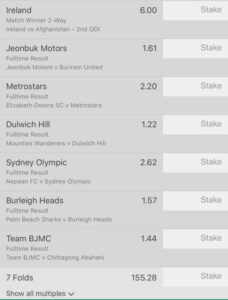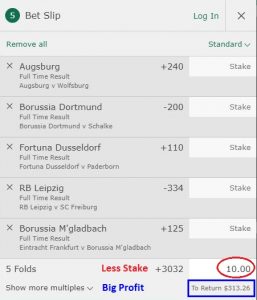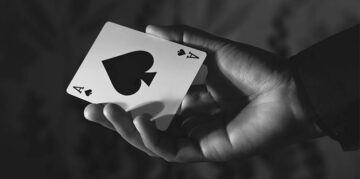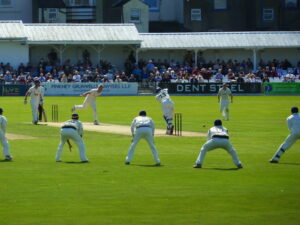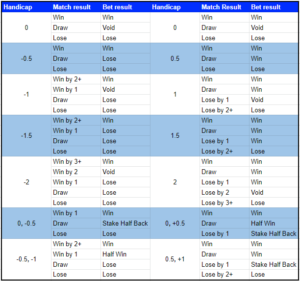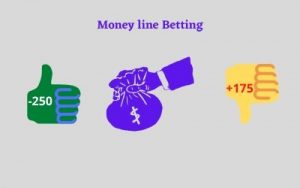Reading sports betting odds requires understanding the peculiar language used by the house in different areas. The visual difference in American, decimal (European), and fractional odds (British) make it seem as if the odds are different in each area. In reality, they represent different ways of expressing the amount of potential profit gained from money wagered. This article will explain how to read odds in each system to allow you the best chance of profiting from your bet.
Understanding Betting Odds For Greater Wagering Success
The sports betting odds express how much money you can win for each dollar gambled. Odds typically track the likelihood of an event happening, although they also reflect the possibility of the house receiving a large amount of money on a bet. When an event is more likely to happen — Tiger Woods winning the Masters or Alabama winning a football national championship — the odds are lower, reducing the payout, and managing the risk to the house. When an event is less likely to happen, such as a small college winning the national championship or a marginal pro winning one of golf’s major championships, the odds increase, allowing for a higher payout. However, the small chance of the event occurring reduces the risk to the house that would flow from higher payouts.
Following is a look at odds that are written as different, geographical sports betting odds:
American Odds
American odds are written as and are called money-line bets or “moneyline” odds. Your profit potential in American odds is written as a total sum that you win or the amount you need to bet based on a common-$100 range. The profits that you win from American odds are given to you alongside your initial principal.
Example: Bookies express odds with a plus or minus, with the “-” indicating the favorite, while the “+” represents the underdog. For example, to win $100 on -150 odds you must wager $150. Odds of +180 mean that you win $180 with a successful $100 bet. Note that the sum of the odds does not have to equal zero. The favorite could be -120, while the underdog is +210. Larger numbers represent a stronger favorite/underdog. A participant with -500 sports betting odds rates as a much larger favorite than one with -120 odds.
Decimal Odds
Example: Houses place a number, such a 3.0 or 2.5, to express decimal odds. A professional soccer team may receive odds of 3.0 to win its next match. The 3.0 odds means that a winning bet of $1 pays $3. To determine your payout, multiply the amount of your wager by the odds. Winning a $10 bet on 50.0 odds results in a payout of $500. The larger the number, the less likely the event will occur. Odds of 2.0 have far higher chances of occurring than odds of 100.0.
Fractional Odds
Example: These are the odds you see in sports pundits predictions for events (although not the exact odds as those given by the house). Houses set the odds using fractions, such as 20/1 or 1/5. The number on the left indicates how much you win if you bet the number on the right. In our examples, a bet of $1.00 wins $20.00 for the 20/1 odds, while a wager of $5.00 wins $1.00 in the 1/5 odds. The smaller the discrepancy in the numbers, the more likely an event will occur. If the number on the right is smaller than the number on the left the chances of the event occurring rise. A team with 1/5 odds possesses a much higher chance of prevailing than a team with 20/1 odds. Make sure you focus on the discrepancy and not the numbers themselves. A golfer with odds of 6/4 is favored to win over a golfer with odds of 5/2.
A Better Look at the Differences in Sports Betting Odds
The various ways of displaying odds help punters to obtain different perspectives on probability, profit, cost and risk. The variance in how you can write odds helps you to strategically gather data. For example, American odds tell you about the amount you need to spend, fractional odds can determine how much you win per-amount wagered and decimal odds track what your overall risks are per-dollar spent.
Modern bookies give you the option of changing sports betting odds to the formats you prefer.
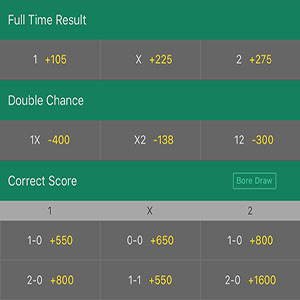
American Odds Example
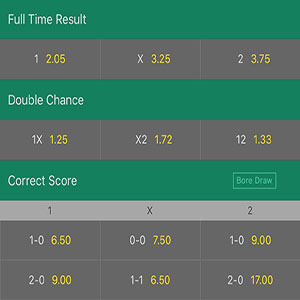
Decimal Odds Example
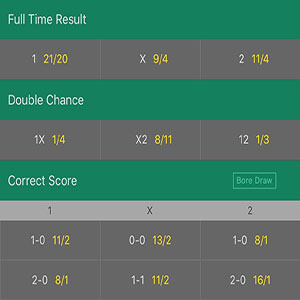
Fractional Odds Example
Frequently Asked Questions for Sports Betting Odds
Who Sets Your Sports Betting Odds?
Betting exchanges and bookmakers employ professional compilers to calculate the odds that bets are displayed as. A bookie’s own financing, ingenuity and statistical data are factors behind the specific odds shown on their exchange. The global activity in sports gambling also plays a role in which odds a bookie offers.
What Does Plus & Minus mean in betting?
A plus designation indicates an underdog. A minus designation identifies the favorite. The plus indicates the potential payoff of a $100 bet while the minus shows the amount needed to realize a $100 payoff. -350 odds means that a winning $350 bet results in a $100 profit (plus the return of the $350 stake).
Are lower odds better?
Low odds generally indicate the potential for something. The higher odds mean that something is unlikely. A lot of people get the two confused. They assume it should be the other way around. However, in the sports betting world, you want something to have a low betting odd. That means there is more potential for the player.
Why would you bet on negative odds?
Gamblers like “low odds” because these odds are in their favor. There are no guarantees, but you can lower your risk via high-probability bets that have lower profits, being called low-odds bets.
What Does +100 mean in betting?
Odds of +100 represent an even money bet. A winning +100 wager pays $100. A +100 line will occur when the odds of winning or losing are relatively evenly balanced. It also represents a much riskier bet than a -200 and a less profitable wager than a +200.
What Does -100 Mean In Betting?
Sports betting odds of -100 represent an even money bet. Houses may issue even money odds as -100 or +100, depending on their preference.
Final Thoughts
Source: https://bettingplus.net/sports-betting-odds-explained/
